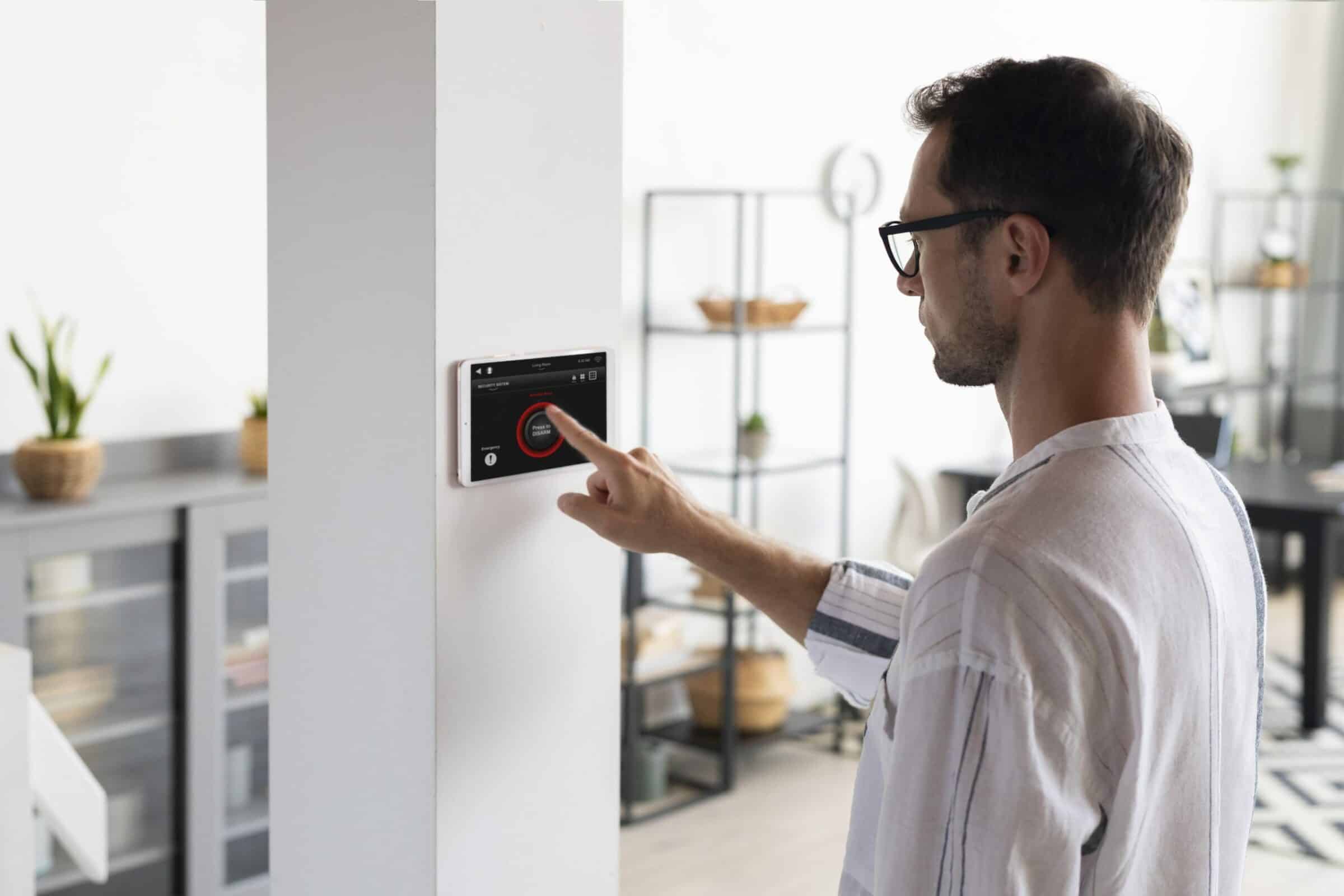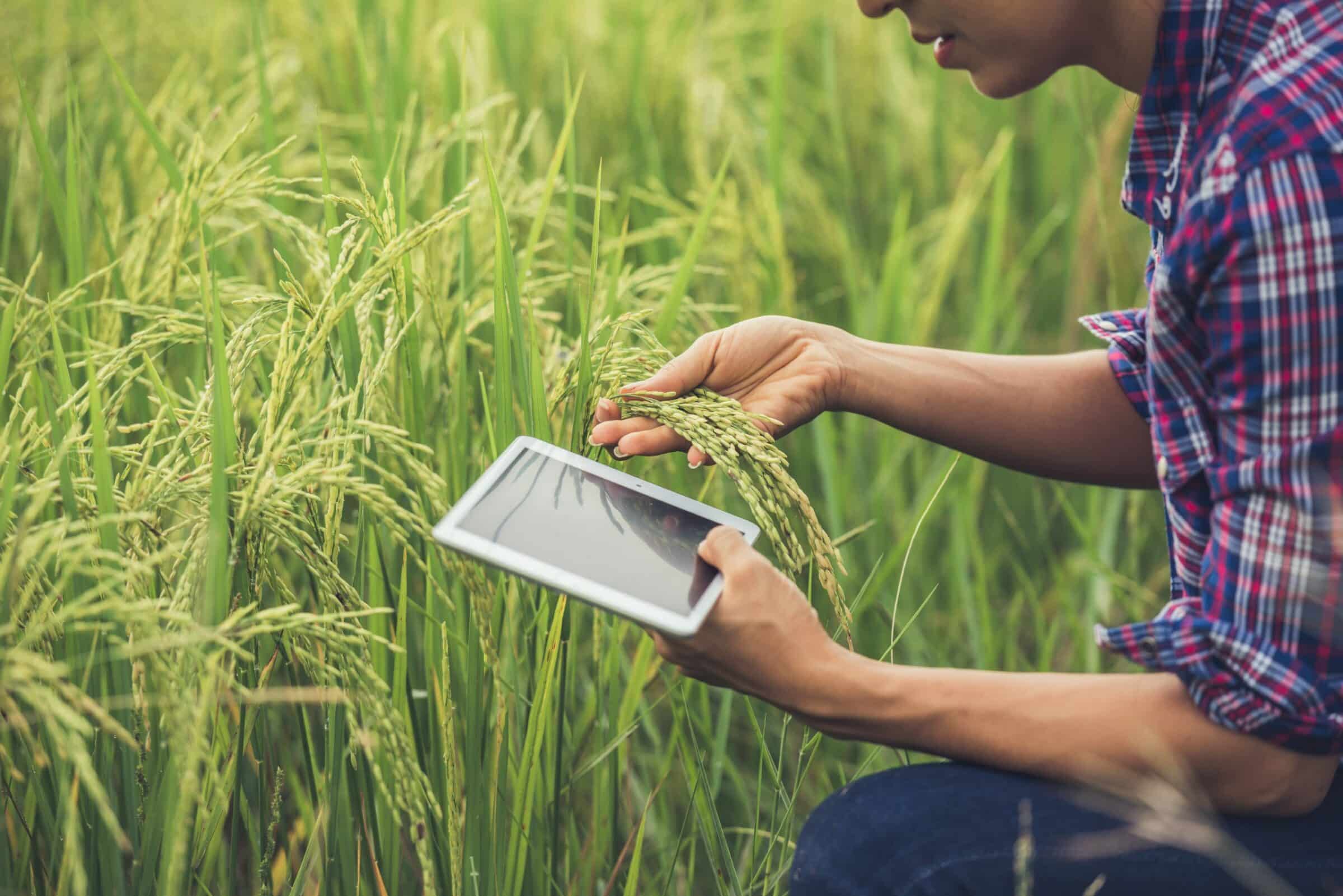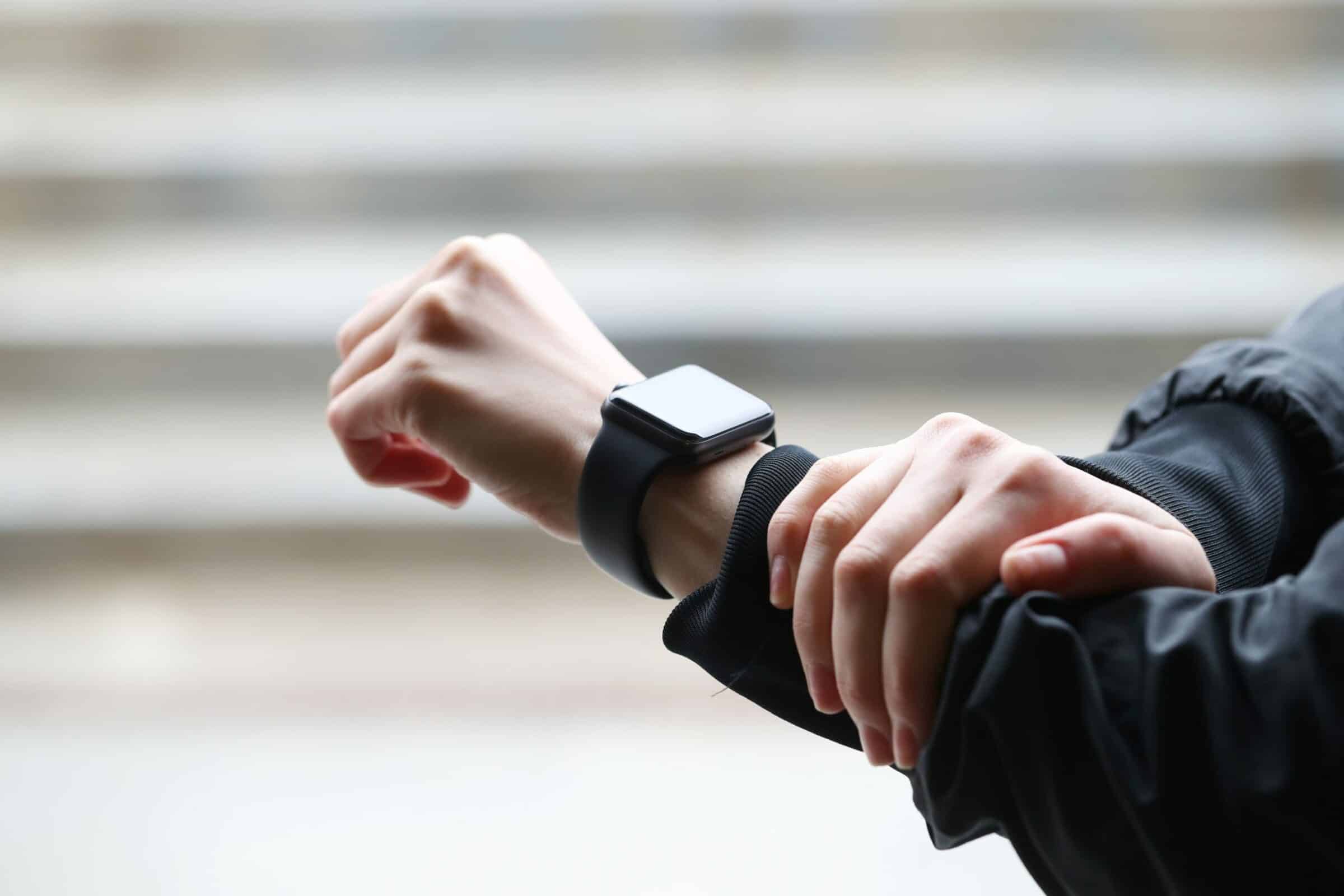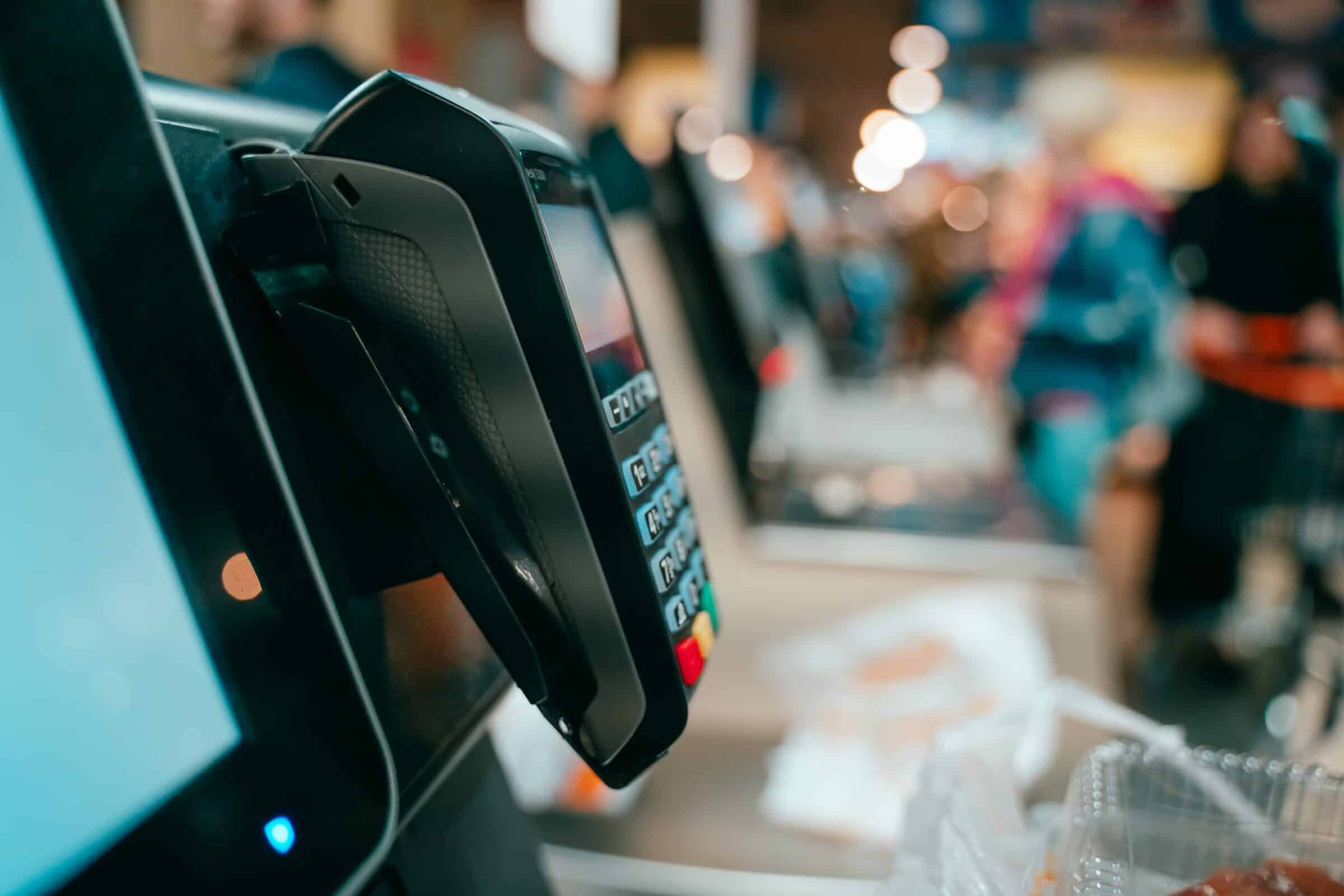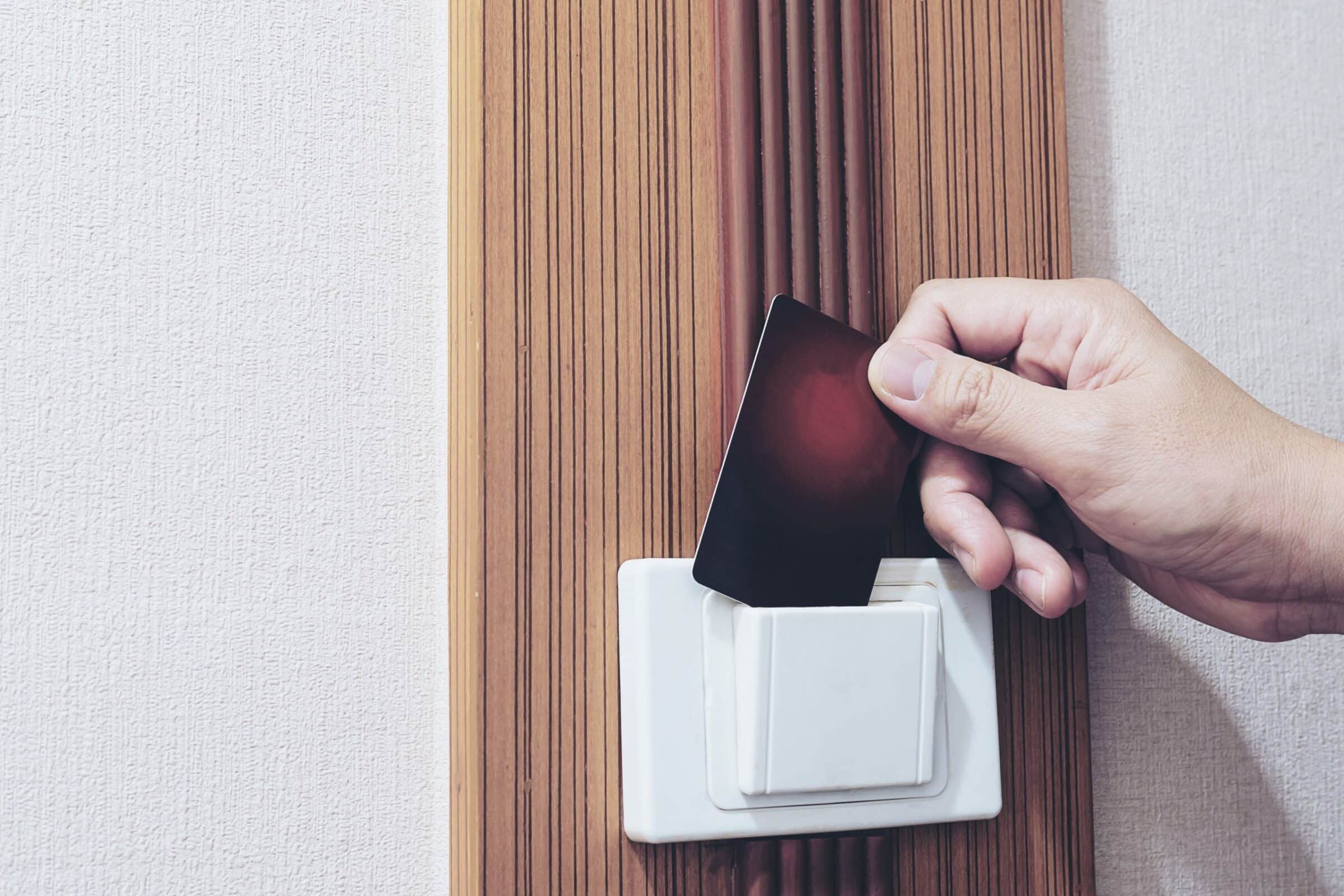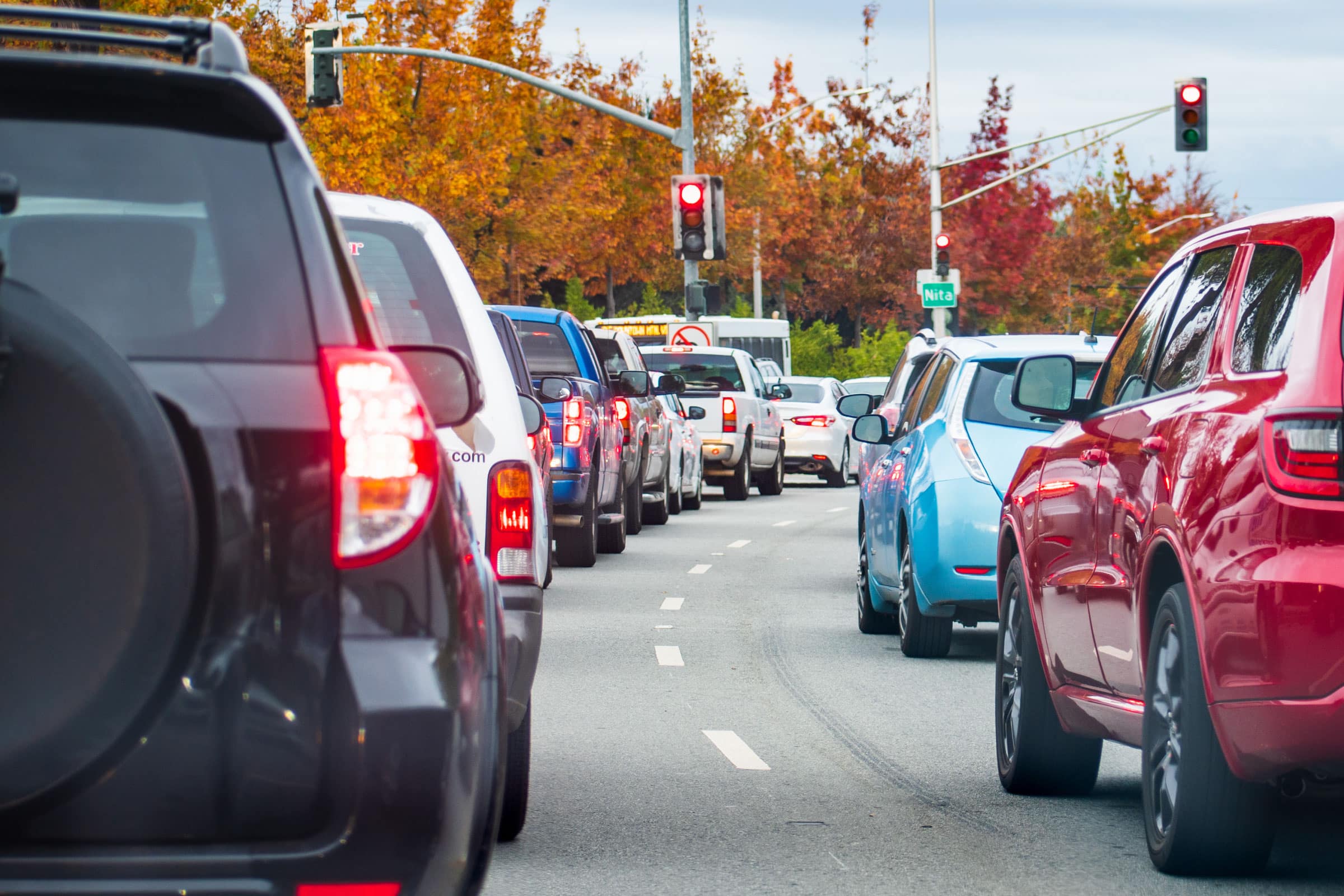What’s in this article?:
- What is IoT?
- Where is IoT mostly used?
- Find industry-leading connectivity solutions with Caburn Telecom
As technology advances, more and more businesses and sectors are utilising new technologies to make their processes more efficient.
The Internet of Things (IoT) is one such technology that is slowly but surely becoming more prevalent in society.
In this post, we’ll take a look at 13 industries where IoT is mostly used and how this technology is being used.
But first, we must ask:
What is IoT?
The Internet of Things, also known as IoT, is a system of interconnected devices and sensors that are able to collect and share data. This data can be used to monitor and automate various tasks and processes.
By nature, IoT devices tend to be geographically widespread and often installed at scale.
IoT SIM cards are specially designed to meet the needs of IoT devices. The SIM card supplies the IoT device with a data connection and may also offer other features such as remote management and security.
To learn more about IoT and IoT SIM cards, consider reading our guide: An Essential IoT SIM Card & IoT Connectivity Guide.
Where is IoT mostly used?
IoT is used in most modern industries, often completely revolutionising the efficiency and accuracy of work done in the sector.
Some key industries utilising IoT include:
- Smart cities
- Smart homes
- Supply chain management
- Agriculture
- Enterprise solutions
- Wearables
- Connected factories with Industrial IoT
- Retail
- Hospitality
- Traffic
- Fleet management
- Energy and utilities
- Healthcare
Let’s take a deeper look at each industry:
1) Smart cities
IoT is being used to develop smart cities, where various systems are connected and share data to improve the efficiency of city operations. There are multiple ways IoT can be used to advance a city to evolve into a smart city:
- Water and waste management: Sensors can be used to detect leaks in the water system, saving both water and money.
- Energy management: IoT can be used to monitor energy consumption in real-time, allowing for more efficient use of resources.
- Public safety: Connected cameras and sensors can help law enforcement identify and track criminals.
- Pollution monitoring: Sensors can be used to monitor air quality, water quality, CO2, levels, temperature, and noise levels.
2) Smart homes
Smart homes are becoming increasingly popular, as they offer a number of benefits, such as:
- Energy efficiency: Smart meters and thermostats can be used to regulate temperature, saving energy and money.
- Security: Cameras and sensors can be used to monitor activity in the home, deterring burglars and alerting the homeowners to any potential threats.
- Convenience: Automated tasks, like turning on the lights or opening the garage door, can make everyday life more convenient. These tasks can typically be done through mobile phones or remote technology.
- Smart lighting: LED bulbs can be controlled remotely, saving energy and money.
3) Supply chain management
For any business, keeping track of inventory is essential. IoT can be used to track products throughout the supply chain, from a product’s manufacture to its delivery to the customer. This data can be used to:
- Optimise production: By understanding where products are in the supply chain, businesses can optimise production to meet demand. If there are any issues within the supply chain, they can be quickly identified and resolved.
- Improve customer service: By tracking the location of products in the supply chain, businesses can provide better customer service by offering accurate delivery estimates.
- Asset tracking: IoT can be used to track assets, like containers and pallets, throughout the supply chain. This helps to ensure that goods are delivered on time and that nothing is lost or stolen.
- Inventory management: RFID tags can be used to track inventory, making it easier to keep track of stock levels and avoid stock-outs.
4) Agriculture
IoT can be used to increase the efficiency of agricultural production, such as with:
- Smart irrigation systems: These are used to reduce water usage, saving both water and money.
- Livestock tracking: RFID tags can be used to track livestock, making it easier to manage herds.
- Equipment monitoring: IoT can be used to monitor farm equipment, like tractors and combine harvesters. This data can be used to optimise maintenance schedules and prevent downtime.
- Soil moisture monitoring: Farmers can use sensors to monitor soil moisture levels, optimise irrigation, and reduce water usage.
- Precision farming: Farmers can use GPS and mapping data to plan where to plant crops, apply fertilizer, and spray pesticides. This helps reduce the number of resources used and improves yield.
- Soil chemistry and fertiliser profiles: Farmers can use sensors to monitor soil chemistry and create fertiliser profiles. This helps them to optimise the use of resources and improve yields.
5) Enterprise solutions
There are a number of ways that IoT can be used to improve business operations, such as:
- Workforce management: IoT can be used to track the location of employees, as well as their working hours. This data can be used to optimise the workforce and improve productivity.
- Building management: Sensors can be used to monitor a range of building data, like temperature, humidity, and air quality. This helps businesses to create a more comfortable working environment and reduce energy costs.
- Mitigation tactics: M2M SIM cards can be used to prevent cybersecurity attacks and mitigate the risks associated with IoT devices.
- Customer analytics: Real-time data allows businesses to make informed decisions based on customer analytics.
- Information Technology Infrastructure Library (ITIL): These detailed IT assets and service management practices are massively aided by IoT. These practices include a wide range of processes, including incident management, problem management, change management, and release management.
6) Wearables
Wearable technology has come on leaps and bounds thanks to IoT. Some of the ways that IoT is being used in wearables include:
- Smartwatches: From reading messages to fitness and activity tracking, smartwatches offer users a range of services on one condensed device. The functionality of these devices is undeniable, whether you’re tracking the location of your children or counting the number of steps you’ve taken throughout the day.
- Virtual and augmented reality: Virtual reality (VR) and augmented reality (AR) gear has become a hot property for gamers and tech enthusiasts. However, these technologies are also being used in a number of other industries, including healthcare, education, and retail.
- Elderly care: IoT helps with the location monitoring of elderly patients in hospitals and carehomes, providing more support for caregivers. Better yet, nano-sensors can even help numerically predict the risk of serious medical conditions, like cancer.
- Less workplace accidents: IoT wearables are often used in factory and military settings, reducing the number of accidents while working on the job.
7) Connected factories with Industrial IoT
Industrial IoT (IIoT) is IoT used within a large, factory operation, and is often referred to as the fourth wave of the industrial revolution.
IIoT creates an interconnected network of sensors, instruments and devices used to increase operational efficiency and productivity in factories. Some of the ways that IIoT is being implemented include:
- Maintenance management: By using sensors and connected devices, factories can track the performance of their machinery in real time. This helps to identify issues early on before they cause major problems.
- Predictive maintenance: Predictive maintenance is a type of maintenance that uses data and analytics to predict when equipment is going to fail. This information can then be used to schedule repairs and replacements before the equipment breaks down, ensuring optimal machine health.
- Process automation: IoT can be used to automate processes in factories, such as quality control and material handling.
- Safety and security: Connected devices can be used to monitor factory conditions and identify potential safety hazards. They can also be used to track the location of employees, in case of an emergency.
- Product development and quality testing: By collecting data from sensors and devices, factories can gain insights into how their products are performing. This information can be used to improve the quality of products and speed up the development process.
8) Retail
A key industry using IoT SIM cards to revolutionise its sector is retail. IoT provides retailers with the ability to track inventory, manage stock levels and even improve customer service. Some of the ways that IoT is being used in retail include:
- Cashless shopping: New stores, like Amazon Go, are utilising IoT to its utmost potential. With their concept store, customers can simply walk in, pick up what they need, and walk out, with their purchase being charged to their Amazon account automatically.
- Inventory management: IoT sensors can be used to track inventory levels in real-time, ensuring that shelves are always stocked with the right products.
- Data-driven marketing: By collecting data from IoT devices, retail businesses can gain insights into customer behaviour. This information can then be used to personalise the shopping experience and target marketing efforts.
9) Hospitality
The hospitality industry is using IoT to improve the guest experience, as well as to increase operational efficiency. Some of the ways that IoT is being used in hospitality include:
- In-room controls: Guests can use a smartphone or tablet to control the temperature, lighting, and other features in their room.
- Housekeeping and room service: Staff can use sensors to track when rooms need to be cleaned and which rooms are available. Guests can also make room service requests through a mobile phone.
- Electronic keys: Guests can use their smartphone as a key, eliminating the need for physical keys.
- Energy management: Sensors can be used to monitor energy usage in hotel rooms and common areas. This data can be used to reduce energy costs and improve efficiency.
- Check-in/check-out: Guests can use their mobile devices to check in and check out of their hotel room, without having to visit the front desk.
10) Traffic
We could’ve placed this in with smart cities, but we believe it deserves its own section – it’s that important.
IoT is being used to help cities manage their traffic flow, reduce congestion and even improve public safety. Some of the ways that IoT is being used in traffic management include:
- Smart parking: Smart parking systems use sensors and connected devices to help drivers find available parking spots. This helps to reduce congestion and emissions from cars idling while searching for a parking space.
- Traffic light control: IoT can be used to monitor and adjust traffic light patterns, based on the current flow of traffic. This helps to keep traffic flowing smoothly and reduces congestion.
- Public safety: IoT sensors can be used to identify potential safety hazards, such as potholes or ice on the road. They can also be used to monitor traffic conditions and alert drivers of potential dangers ahead.
11) Fleet management
IoT is also being used to manage fleets of vehicles, such as cars, buses and trucks. Some of the ways that IoT and M2M SIM cards are being used in fleet management include:
- Vehicle tracking: By using GPS and other tracking technologies, businesses can keep track of their vehicles at all times. This helps to improve route planning and can even be used to monitor driver behaviour.
- Performance monitoring: IoT sensors can be used to monitor the performance of vehicles, such as fuel consumption and tyre pressure. This information can then be used to improve the efficiency of the fleet.
- Maintenance schedule: By collecting data from sensors, businesses can identify when vehicles are due for maintenance. This helps to prevent breakdowns and keeps the fleet running smoothly.
12) Energy and utilities
The last industry we’re touching on in this list is the energy and utility sector, where IoT is helping to manage resources and improve efficiency. Some of the ways that IoT is being used in this industry include:
- Smart grids: IoT is being used to monitor and manage the electricity grid. This helps to prevent outages and improve the reliability of the power supply. Sensors are implemented to detect exact locations of inefficiency, with alerts put in place to notify of any failures at any point during power transmission.
13) Healthcare
The use of IoT in the healthcare industry has skyrocketed following the pandemic, with some of its uses including:
- Monitor patients: Doctors can monitor at-risk patients at home through sensors, allowing them to take preemptive action if necessary. These patients are also able to connect with their doctors virtually, rather than in person, which reduces the risk of exposure.
- Contact tracing apps: IoT has also been used to develop contact tracing apps. These apps utilise Bluetooth technology to track when two people with the app are in close proximity to one another.
- Medical record keeping: The Internet of Things helps doctors streamline patient medical records and access, making real-time data available where and when it’s needed.
- Monitor blood sugar levels accurately: Continuous glucose monitors (CGM), like Dexcom and Medtronic, monitor a patient’s blood sugar levels and sends the data to their smartphone or a display device. This data can be used to make informed decisions about the patient’s diet, insulin dosage, and exercise. It can also be used to detect trends and patterns over time.
- Upgraded pharmaceutical manufacturing: Pharmaceutical manufacturing is being optimised by IoT as well. Tracking production in real-time means that issues can be caught and resolved quickly, preventing costly delays (but more on that later).
Find industry-leading connectivity solutions with Caburn Telecom
Thank you for reading our blog post on the 13 industries using IoT and M2M SIM cards.
This isn’t a definitive list of all the industries using IoT. In fact, you’ll find that IoT is being used in most modern industries, from education to manufacturing.
If you’re looking for an IoT or M2M SIM card for your business, Caburn Telecom can help.
We’re a leading global provider of connectivity for IoT devices, providing high-quality connectivity solutions that are designed to meet the needs of businesses of all sizes.


